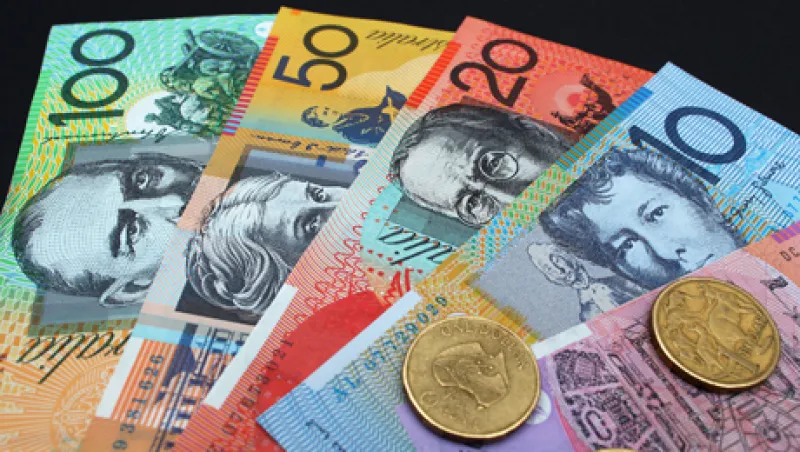The Australian dollar has, during the ups and downs of the credit crunch, served as the repository of traders’ hopes and fears about the global economy in general and the Chinese economy in particular.
Strong demand for commodities has kept output growth strong and pushed up interest rates — attracting money looking for a decent return.
But on Tuesday its central bank lowered the benchmark rate for the second straight month. Many expect a hat trick, with a further cut in July. Expectations of looser monetary policy have prompted a 9 percent fall in the Aussie from $1.05 in late April to an eight-month intraday low of $0.96 on Monday, though the currency was little changed on the day at around $0.972 in early U.S. trading on Tuesday because the rate cut had been priced in. Some strategists think the currency looks vulnerable even at this new lower level.
Hedge funds had recently found the Australian dollar all the more attractive because investing in China itself was so problematic. Fears about unsustainable bubbles, frustration at poor corporate information, and capital controls had made direct plays on Chinese equities and other assets difficult. Australia, whose economic growth is founded on commodity exports to China, seemed to provide an ideal solution.
Australia’s exposure to the global commodity boom, triggered largely by China, boosted domestic growth too. This allowed the economy to keep growing throughout the credit crunch and forced the Reserve Bank of Australia (RBA), the central bank, to raise rates to a peak of 7.25 percent even as the credit crunch raged in much of the rest of the world. These high rates drew money into the Australian dollar.
However, in its meteoric rise may lay the germ of a sharp fall.
Growth in China is slowing — the official purchasing managers' index, which indicated on Friday that manufacturing growth has eased to its slowest pace this year, is simply the latest in a series of downbeat data.
Moreover, looking further into the future, there are potential weaknesses in two of the commodity markets in which Australian exporters are so strong: coal and iron ore. Coal is vulnerable to the growth of shale gas as an alternative source of energy and to concerns about the pollution it causes. Excess capacity in China’s steel market could weaken Australia’s iron ore export sector.
The poorer growth outlook outside Australia has reduced growth expectations inside Australia. Announcing the RBA’s 25 basis point (bp) cut to 3.5 percent on Tuesday, Glenn Stevens, the governor, cited “further weakening in Europe and some further moderation in growth in China”.
Reacting to Tuesday’s cut and accompanying comments, Nomura predicted a further 25bp reduction at the July meeting “in a hope to stimulate domestic demand further.” Nomura feels that Australian consumers require further prodding even after the latest cut, because they are proving reluctant to compensate for the depressive effect of external weakness outside Australia by spending the extra income they receive through the lower interest rates which they pay in the domestic market, courtesy of the RBA’s monetary easing.
The billion (Australian) dollar question is what will happen to the Aussie if rates continue to fall.
Australian government bonds remain attractive despite a 21bp drop over the past week on expectations of Tuesday’s RBA rate cut. With the yield on the ten-year at 2.91 percent at the end of Asian trading on Tuesday, they offer a high rate compared with other AAA government debt.
However, further falls in the central bank’s benchmark rate could dim the luster of Aussie-denominated assets, leading to an outflow of the huge amounts of money that have piled into Australia in recent years — and an abrupt weakening of the Australian dollar.
Putting a number to this potential weak spot in the Aussie, Morgan Stanley calculated on Thursday that Australia had a net international investment position — the sum of Australian investments abroad minus foreign investments in Australia — that comes to an eye-watering minus 58 percent of gross domestic product (GDP). That was before Tuesday’s figures from the Australian Bureau of Statistics showing the gap between assets and liabilities increased by A$24 billion ($24.2 billion) to A$880 billion between December 2011 and March 2012.
The Aussie is also suffering from another potential weakness. Judging by purchasing power parity — the amount of goods and services that could be bought with $100 in Australia, compared with the U.S. — Morgan Stanley calculates that it is overvalued by more than 20 percent, the highest amount of any of the G10 leading economic powers.
These numbers suggest that if the Australian dollar falls further, it could fall very rapidly. But Aussie bears beware: Its status as a global growth play makes it extremely volatile and prone to rapid rises as well as rapid slides. This is testified by the oscillations of autumn 2011, when it dropped 13 percent in a few weeks in response to fears about the sovereign debt crisis, only to regain all the lost ground a few weeks later.






